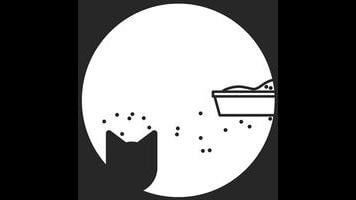
On the back cover of Cat Is Art Spelled Wrong is a tweet by Joyce Carol Oates, riffing on Allen Ginsberg’s poem Howl:
The authors of the essays in this book disagree. Ranging from informative and fun to darkly revealing, these essays explore the phenomenon of the cat video.
The inspiration for the book came from the first International Cat Video Festival at the Walker Art Center in Minneapolis. The staff of Coffee House Press went for fun, but the experience surprised them by being “magical.” They left filled with curiosity and questions: “There’s something about cat videos. There’s something irresistible about them that doesn’t transfer to dog videos, or parakeet videos (though baby goat videos might come close) … What’s so special about watching what is essentially YouTube with a few thousand strangers?” The editors wanted to find out, and this essay collection is the result.
Some of the essays describe the experience of the festival: thousands of people “that really, really wanted to watch cat videos. In public. Together. To the point where, as the preshow dragged on … the audience lost its patience and started chanting, ‘Cats! Cats! Cats!’” This was, contributor Jillian Steinhauer writes, “strangely marvelous” but also “undeniably weird”: “We live in an age not just of the celebrity cat—which would be notable by itself—but of the reality celebrity cat.”
Are cat videos art? In “The Nine Lives Of Cat Videos,” Steinhauer claims that while some cat videos may rise to the level of art, the genre as a whole is spectacle. “Spectacles are one of the best forms of distraction we have. Ideally, an encounter with a work of art makes you think … A spectacle, on the other hand, seeks to envelop, and in doing so invites you to dial down your brain.” And this isn’t necessarily a bad thing—Stephen Burt argues that cat videos “offer a refuge from the relentless purposiveness of modern life, where we have goals and seek the shortest means to these goals.”
In one of the strongest and most challenging essays, “Feline Darlings And The Anti-Cute,” Sasha Archibald explores the dark side of “cute” (which nearly all cat videos are): “The index of cuteness is the degree to which an object has shed its power.” She goes on to claim that “YouTube speaks of a tale of catness thoroughly at odds with feline history” when cats used to be symbols of “potent danger, sexual provocation, and impervious autonomy.” But as cats became household pets they became dependent on humans, more helpless, more passive, and therefore more cute.
Other essays, such as David Carr’s, complain about cats. Ben Huh, creator of “I Can Haz Cheezburger,” is quoted as saying, “Cats are like having a teenager. They just look at you over and over and say, ‘Can I have more stuff?’” But even people who don’t like cats still seem to have a grudging admiration of cat videos, perhaps because, as Huh says, “The internet is a playpen for cats where you never have to smell or clean the litter box.”
Then there are the cat lovers: Matthea Harvey writes about her love for her own cat and introduces us to the first cat celebrity—Jeoffry, a cat praised to the skies in Christopher Smart’s poem Jubilate Agno, written between 1759 and 1763. This acts as the perfect introduction to the next piece, “Jeoffry,” by Elena Passarello, which tries to fill in lines missing from Smart’s manuscript. She confesses: “My cats are not as cool as Jeoffry. They don’t catch rats or dance in godly joy. They stick their butts in my face and sneeze in the water glass.” And this is partly what made her turn to the cats of the internet. “Video cats are, for me at least, the closest cats to God.”
Cats have been associated with the Egyptian goddess Bastet, with fairy tale transformations, with virgins, with prostitutes, with indifference, with passion. Reading this book, I learned about the history of the cat video, from Thomas Edison’s boxing cats to Felix The Cat to Nyan Cat to Maru to Henri. Readers learn that in most developed countries there are more cats than children; that a cat’s brain is the size of an avocado pit (“and contains just as many deep thoughts,” David Carr writes); that during the Salem witch trials “a woman wasn’t considered completely dead until her [cat] was also murdered.”
Cats have a hold on us—even those of us who do not consider ourselves a “cat person.” And now cat videos do too. All it takes is a click of a mouse, or, in the case of Cat Is Art Spelled Wrong, the turn of a page, to find out why.